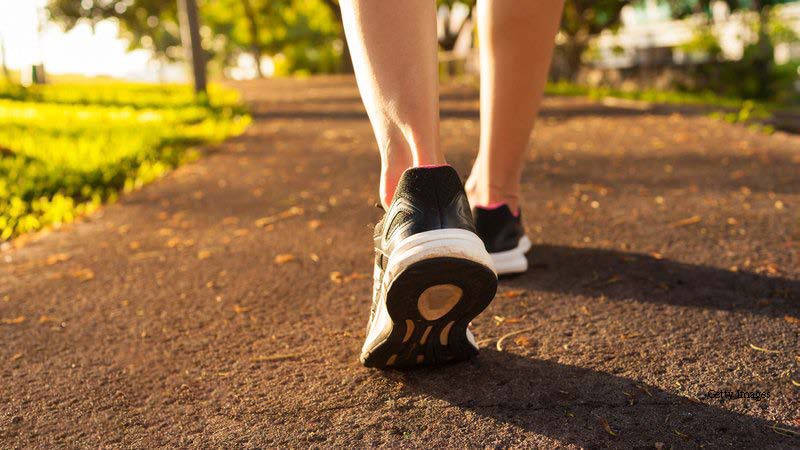Cross-Train Terrain. How Walking Will Change Your Life
 Once of the most common questions we get asked is how often to attend class, as well as what else clients should potentially be doing in addition to their barre routine. Our studios offer a variety of moderate to vigorous activity level exercise classes to help you feel your best (we suggest 3 to 5 classes weekly). But what does the rest of your day look like outside of the studio?
Once of the most common questions we get asked is how often to attend class, as well as what else clients should potentially be doing in addition to their barre routine. Our studios offer a variety of moderate to vigorous activity level exercise classes to help you feel your best (we suggest 3 to 5 classes weekly). But what does the rest of your day look like outside of the studio?
12 hours is the amount of time the average person is sitting a day. The more hours you sit each day, the higher your risk of metabolic problems, even if you achieve the recommended amount of daily physical activity.
Low intensity, ‘non-exercise’ activities like standing and walking are much more important than you realize. In fact, low level activities play a crucial metabolic role and account for more of our daily energy expenditure than moderate-to-high intensity activities. From helping you lose weight and de-stress to lowering your blood pressure and reducing your risk of many chronic diseases—going for regular walks is one of the best and easiest things you can do for your health. Here’s the top benefits of why you should be walking to the studio from now on!
1. Improve Your Mood – We know how sometimes it takes a glass of wine or a square (or three) of dark chocolate to decompress from the day. Well, going for a walk is a zero-calorie strategy with the same benefits. Research shows that regularly walking actually modifies your nervous system so much that you’ll experience a decrease in anger and hostility. Walk with a friend (like your barre buddy!) for added interaction to help you feel connected, which boosts your mood. And summertime is the perfect time to start! Walking outdoors exposes you to natural sunlight, which can help stave off Seasonal Affective Disorder (SAD)—making it a potential antidote for your seasonal blues.
 2. Boost Your Creativity – Feeling stuck at work? Troubleshooting a tricky relationship? Get the creative juices flowing by hitting the pavement! According to a 2014 study in the Journal of Experimental Psychology, Learning, Memory, and Cognition, going for a walk can spark creativity. Researchers administered creative-thinking tests to subjects while seated and while walking and found that the walkers thought more creatively than the sitters.
2. Boost Your Creativity – Feeling stuck at work? Troubleshooting a tricky relationship? Get the creative juices flowing by hitting the pavement! According to a 2014 study in the Journal of Experimental Psychology, Learning, Memory, and Cognition, going for a walk can spark creativity. Researchers administered creative-thinking tests to subjects while seated and while walking and found that the walkers thought more creatively than the sitters.
3. Looser Jeans – Not that you’re wearing them these days anyways (yoga pants are always acceptable for any occasion in our book). But regular walking can help improve your body’s response to insulin, which can help reduce belly fat. Daily walking increases metabolism by burning extra calories and by preventing muscle loss, which is particularly important as we get older.
4. You’ll Keep Your Legs Looking Great – We’re not talking about those curvy gams you’ve been carving out at barre, we’re talking about veins – varicose veins to be exact (eww, we know.) Walking strengthens the secondary circulatory system (a collection of muscles, veins, and valves in our calf and foot) by strengthening and preserving leg muscle, which boosts healthy blood flow.
5. You’ll Slash The Risk Of Chronic Disease – The statistics are impressive. The American Diabetes Association says walking lowers your blood sugar levels and your overall risk for diabetes. Researchers at the University of Boulder Colorado and the University of Tennessee found that regular walking lowered blood pressureby as much as 11 points and may reduce the risk of stroke by 20% to 40%. One of the most cited studies on walking and health, published in theNew England Journal of Medicine in 2002, found that those who walked enough to meet physical activity guidelines (30 or more minutes of moderate activity on 5 or more days per week) had a 30% lower risk of cardiovascular disease, compared with those who did not walk regularly.
As a general goal, aim for at least 30 minutes of walking every day. Short on long chunks of time? Even brief bouts of activity offer benefits. For instance, if you can’t fit in one 30-minute walk, try three 10-minute walks instead. Even making simple changes like parking at the back of the parking lot add up throughout the day!
For the apple watch and fitbit fanatics, a common steps goal is a minimum of 10,000 steps daily. Once you hit that goal consistently, try adding on an additional 1,000 steps at a time. Want to turn your walk into even more of a workout? Go for a hike and add uphill elevations, try interval walking (walk for one minute as fast as you can, then at a moderate pace for 2 minutes, and repeat), or add equipment such as a resistance band or ankle or hand weights for more of a challenge.


